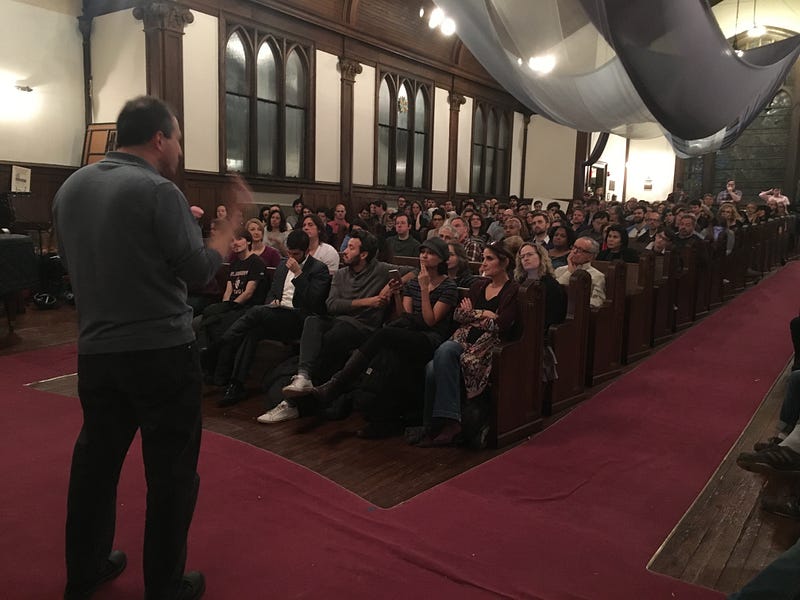

The New Civic Activism
A view from Brooklyn
By David Pechefsky, Senior Advisor
Since the presidential election, my Brooklyn neighborhood has seen a big surge in liberal activism. Under the banner of “Get Organized Brooklyn” our local Council Member has been convening monthly meetings attended by as many as a thousand people. After the first meeting in November, people broke up into over a dozen working groups focused on such topics as standing with our immigrant neighbors, protecting safety net programs, and finding progressive candidates. The new found interest on the part of many in local politics is especially interesting to me.

The local political club of which I am member of has been around since 1968 and remains a recognized force in Brooklyn politics (Chuck Schumer and Mayor de Blasio both dropped in our recent annual dinner!), but for many years we have not found it easy to attract younger members and especially young women. Now it is largely women (many of them younger) who have taken on leadership roles in the civic activism flowing out of Get Organized Brooklyn.
The question to my mind is whether this activism will translate into success in the electoral arena and political power within our institutions of government. It is a question I have often thought about as we go about our work at Generation Citizen of preparing middle and high school students to be engaged citizens. Being engaged is one thing. Taking power is another.
New York City like many other places in the country is dominated by one political party — in our case the Democrats. One feature of this landscape is that in all but a few races the decisive election is a low turnout Democratic primary or in the case where there is an incumbent running there is no challenge at all. This means that campaigns, when they do happen, are less about issues per se and more about the strength of the campaign operation, the networks the candidates have established, and in many cases ethnic politics. This advantages the insider and groups that have established themselves and fosters a culture of “wait your turn.” There is in fact something of a formula for candidates — be active in civic organizations, get yourself on a community board, go to fundraisers for other politicians and candidates, go back and forth between working for a politician or in a politically visible role in government and working for a nonprofit, a union, or a law firm, hope you are living in the right place when a seat opens up that you want to run for or even move strategically with running in mind, hope that the politician you’ve appended yourself to doesn’t double cross you when the time to run comes!
Every profession has a career path so arguably why shouldn’t politics? But this runs contrary to the idea of our government being broadly representative and the ideal of inclusivity. So how can greater representativeness be achieved? More people being more engaged will certainly make a difference, but my sense is that it will take a more targeted attack on the institutionalization of a political culture that favors exclusivity. This is a different project then the one manifested in the Tea Party movement, which was largely about a quest for ideological purity within a party. If the lynchpin of our current political system is lack of party diversity in many locales then it follows that this is what needs to be challenged to truly open up our politics.
Vibrant multiparty systems most often exist where legislatures are elected through proportional representation (PR). There are a variety of PR voting methods, but most typically, as in the Netherlands or South Africa, the electorate votes for a party, which puts forward a list of candidates. Think of it as like voting for a team. Under PR if a party gets 20% of the popular vote then they’ll get something close to that percent of seats in the legislature. It works because you have multi-member districts unlike our system where only one candidate can be a winner in each district. In winner take all systems like ours a party could win, for example, 20% of the cumulative vote for seats in the City Council (or the State Assembly or Senate) and not win a single seat! Interestingly, we don’t have to look so far afield for examples of the impact of proportional representation, because New York City itself between 1937 and 1947 used a form of it. During this time, smaller parties won seats on a body that had previously been almost completely dominated by Democrats and the City’s first black Council Member was elected. Of course, like other electoral reforms (campaign finance, independent redistricting etc.) there is a chicken or the egg type problem since the people currently in power write the rules. Whether, the new civic activists in Brooklyn and elsewhere will play by the rules of the game or try to upend them remains to be seen.
Generation Citizen is a nonpartisan, 501(c)3 tax exempt organization which does not endorse candidates; our goal is to engage our staff, participants, and stakeholders in political and civic action on issues that matter to them personally and in their communities. The opinions expressed in this blog post are those of the writer alone and do not reflect the opinions of Generation Citizen.


